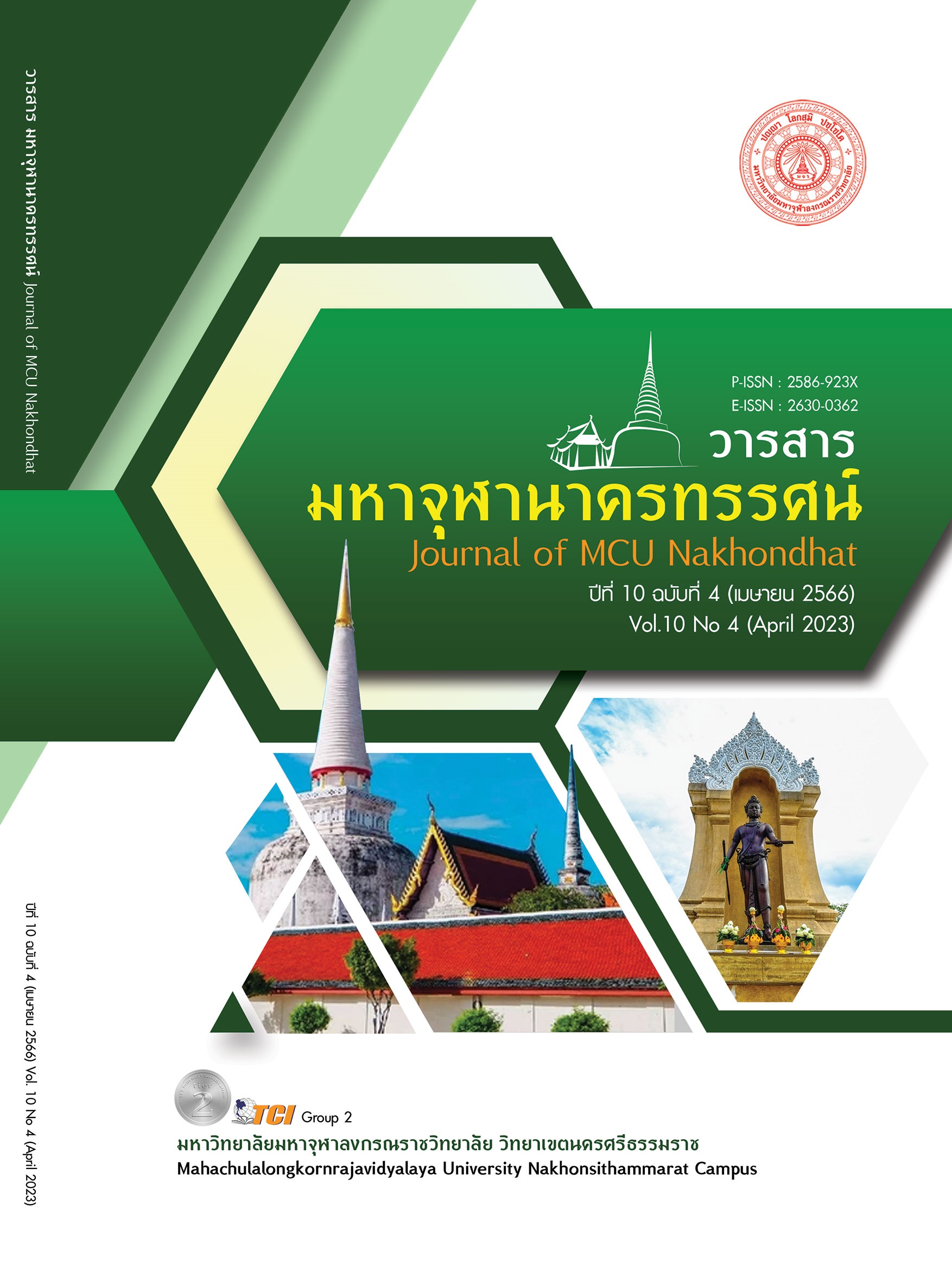EFFECTS OF HEALTH PROMOTION FOR LIFE BEHAVIORS MODIFICATION PROGRAM ON PRACTICAL BEHAVIORS, BODY MASS INDEX, AND BLOOD PRESSURE LEVELS AMONG HIGH-RISK HYPERTENSIVE PERSONS
Main Article Content
Abstract
This article aimed to determine the effect of the health promotion for life behaviors modification program on the health behaviors, body mass index and blood pressure levels before and after joining the program. The research was designed in the quasi-experimental method. The samples of this study included 50 employees, under the social security fund, working for the large industrial factory, in Uttaradit Province. The subjects were selected using the inclusion criteria of persons 1) having less than 5 years aging differences 2) having systolic blood pressure between 130-139 and/or diastolic blood pressure between 85-89 mm.Hg., 3) having a body mass index of at least 23 kg/sq.m. 4) gender, and 5) not getting pregnant. Subjects were divided into two groups of 25 employees including experimental and control groups. The control group received regular care. The Pender’s Health Promotion Model guided the intervention for the experimental group and included participation in an eight-week health promotion for life behaviors modification program. Research tools consisted of a reliable and valid based on 3 experts. Content validity was more than .50, confirmed by IOC. The Alpha Cronbach’s reliability was .79. Health Behaviors Questionnaire (HBQ), Body Mass Index (BMI), and a blood pressure (BP) recording form utilized in blood pressure monitoring. Data analysis used descriptive and comparative statistics. The results found that the experimental group had mean score on diet, exercise, emotion control and stress management on the HBQ were significantly different post-intervention. The difference between the experimental and control group was significant and set at the p-value <.05. The BP mean scores were significantly different post-intervention as well. However, the BMI was not significantly different at the .05 level both before and after the program in the experimental group and control groups.
Article Details

This work is licensed under a Creative Commons Attribution-NonCommercial-NoDerivatives 4.0 International License.
References
กรมควบคุมโรค. (2565). วันความดันโลหิตสูงโลก (World Hypertension Day). เรียกใช้เมื่อ 5 กันยายน 2565 จาก http://www.thaincd.com/2016/news/hot-news-detail.php?id=14345&gid=18
กัลยา ถาวงค์ และเมธินี ศรีสวัสดิ์. (2564). ผลของโปรแกรมการปรับเปลี่ยนพฤติกรรมสุขภาพของกลุ่มเสี่ยงโรคความดันโลหิตสูงในโรงพยาบาลส่งเสริมสุขภาพตำบลบ้านนายาง ตำบลนายาง อำเภอสบปราบ จังหวัดลำปาง. วารสารวิชาการสุขภาพภาคเหนือ, 8(2), 103-119.
ชนาธิป สันติวงศ์. (2565). อาหารต้านโรคความดันโลหิตสูง. วารสารศูนย์อนามัยที่ 9, 16(1), 101-111.
เนตรนภา บัวแก้ว และธนัช กนกเทศ. (2559). ปัจจัยที่มีอิทธิพลต่อพฤติกรรมกับโรคความดันโลหิตสูงของประชากรกลุ่มเสี่ยงสูง กรณีศึกษาตำบลสากเหล็ก อ.สากเหล็ก จังหวัดพิจิตร. ใน วิทยานิพนธ์พยาบาลศาสตรมหาบัณฑิต สาขาวิชาพยาบาลศาสตร์. มหาวิทยาลัยนเรศวร.
บัญชา สถิรพจน์. (2563). Nephrology Review for Internists 2020. เรียกใช้เมื่อ 17 มกราคม 2566 จาก https://cimjournal.com/nephro-conference/hyperten sion-and-kidney/
มูลนิธิหัวใจแห่งประเทศไทยในพระบรมราชูปถัมภ์. (2565). โครงการหลัก 3 อ. ดีต่อใจ. เรียกใช้เมื่อ 5 กันยายน 2565 จาก https://www.thaiheartfound.org /Article/List/38241
วงค์ชญพจณ์ พรหมศิลา และคณะ. (2562). ผลของโปรแกรมการป้องกันโรคความดันโลหิตสูงต่อพฤติกรรมการปฏิบัติตนและค่าเฉลี่ยความดันโลหิตของบุคคลกลุ่มเสี่ยงโรคความดันโลหิตสูง. วารสารพยาบาลสาร, 46(2), 95-107.
ศราวุฒิ บุญญะรัง และคณะ. (2561). ผลของโปรแกรมปรับเปลี่ยนพฤติกรรมป้องกันโรคความดันโลหิตสูงของกลุ่มเสี่ยง อำเภอเพ็ญ จังหวัดอุดรธานี. ใน วิทยานิพนธ์พยาบาลศาสตรมหาบัณฑิต สาขาวิชาพยาบาลศาสตร์. มหาวิทยาลัยสุโขทัยธรรมาธิราช.
ศิริพร ค้างคีรี, และคณะ. (2563). โปรแกรมการส่งเสริมสุขภาพต่อ พฤติกรรมสุขภาพดัชนีมวลกายและระดับความดันโลหิตของกลุ่มเสี่ยงโรคความดันโลหิตสูง. วารสารการพยาบาลและสุขภาพ, 14(1), 80-96.
สมาคมความดันโลหิตสูงแห่งประเทศไทย. (2562). แนวทางการรักษาโรคความดันโลหิตสูงในเวชปฏิบัติ ทั่วไป พ.ศ. 2562. เรียกใช้เมื่อ 5 กันยายน 2565 จาก http://www. thaihypertension.org/hypertensiondetail.php?n_id=442
สำนักงานสถิติแห่งชาติ. (2565). วัยทำงานกับการดูแลสุขภาพ. เรียกใช้เมื่อ 5 กันยายน 2565 จาก https://www.nso.go.th/sites/2014/Pages.aspx
Huang, Y. et al. (2014). Association of all-cause and cardiovascular mortality with Prehypertension: A meta-analysis. American Heart Journal, 167(2), 160-168.
Pender, N. et al. (2011). Health Promotion in nursing practice. (6thed.). Boston: MA: Pearson.
Thapliyal, V. et al . (2018). Prevalence and Associated Factors of Hypertension among Adults in Rural Uttarakhand: A Community Based Cross Sectional Study. Nutrition and Food Science Journal, 6(2), 481-490.


